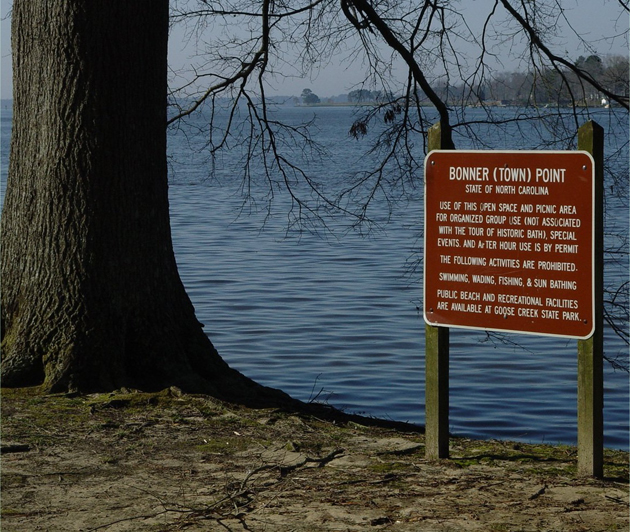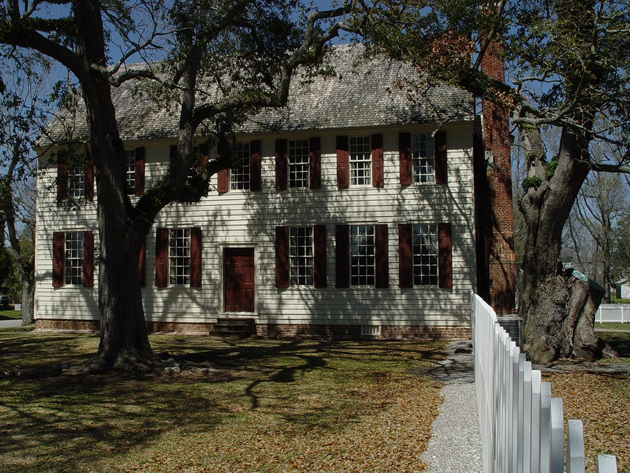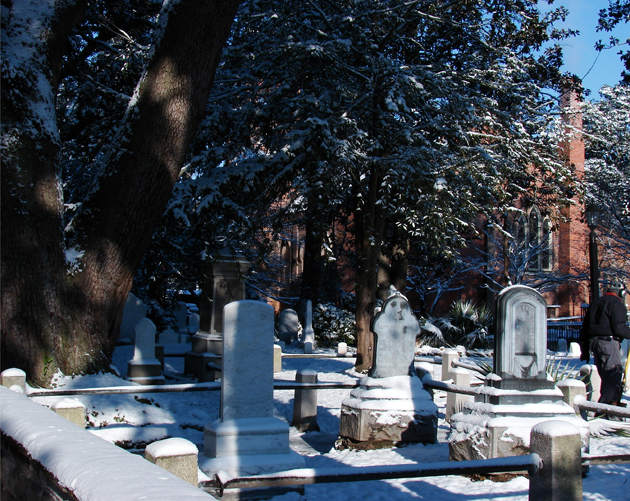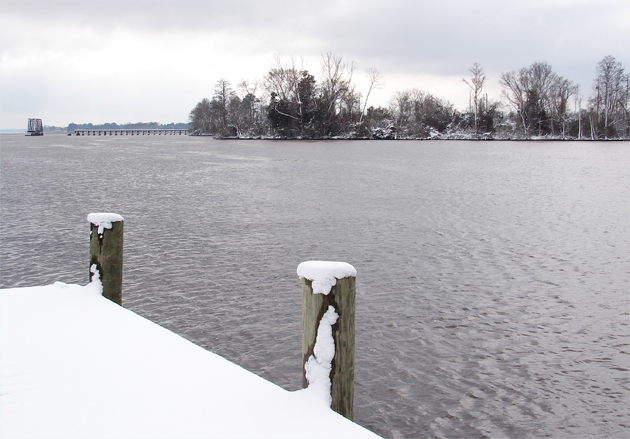Boldly Committed to Truth Telling in the False Face of Fakery
Beaufort County (1705)
Publisher's note: We believe the subject of history makes people (i.e., American people) smarter, so in our quest to educate others, we will provide excerpts from the North Carolina History Project, an online publication of the John Locke Foundation. This second instalment is provided by Sai Srikanth of the North Carolina History Project.
Similar to many other coastal counties, Beaufort County (then known as Pamptecough Precinct) was formed out of the larger Bath County in 1705. By 1712, the county received its formal name, which is attributed to Henry Somerset, Duke of Beaufort, and one of North Carolina's Lords Proprietors.
Although Beaufort was formally recognized in the early-eighteenth century, the area's history predates the county's establishment. English explorers trekked across what is now Beaufort County, encountering the Tuscarora Indians and establishing permanent settlements by the 1690s. One such settlement grew into Bath, the state's first incorporated town. Over time, the settlements became towns, burgeoning largely because of access to navigable waters.

At Bonner Point, with Bath Creek in the background: Above. The Palmer Marsh House, in Bath, NC, is one one of the oldest structures remaining in Beaufort County: Below. photos by Stan Deatherage Click the picture to expand to as much as 1000 pixels wide in most expanded images.

Beaufort's history also reserves a spot in the fight for America's independence. Considered by many as the last battle of the Revolutionary War, the Battle of Beaufort occurred in April 1782. Despite Lord Cornwallis' surrender at Yorktown in 1781, a British presence was still looming in the major ports, such as Charleston. In late March 1782, a fleet of British ships departed Charleston and arrived on the North Carolina coast in a few days. Initially devised as a plundering for provisions, the nature of the mission soon shifted into a legitimate battle, with British soldiers actually capturing the town and holding it for five days. Ultimately, local militia repelled further British onslaughts, and after some prisoner exchanges, the British left North Carolina. American independence was officially recognized the following year.

St. Peters Espiscopal Church, one of the oldest churches in eastern North Carolina, photographed on a wintry day in Washington, NC: Above. The St. Peters Episcopal Church graveyard facing East Main Street in Washington, NC, is where many of Washington's founding fathers are interred : Below. photos by Stan Deatherage Click the picture to expand to as much as 1000 pixels wide in most expanded images.

Numerous towns, some of historic notability, can be found in Beaufort County. Washington, the county seat, is named in honor of President George Washington. It once had a thriving shipbuilding trade and a busy port. Washington remains the cultural and economic center of the county. Bath, established in 1705, is the state's oldest town, first capital, and was a port of entry during the early-eighteenth century. The town of Chocowinity served as the railroad hub of the Norfolk Southern Railway starting in 1910. Other towns located in Beaufort County include Aurora, Belhaven, Pantego, River Road, and Washington Park.

A snowy day, along Washington's waterfront, looking east down the Pamlico River through the railroad trestle that has spanned the narrow end of that river for more than a century. The fabled Castle Island is to the right, and slightly in the foreground, of the trestle: Above. The summer months, along Washington's waterfront is a special palce where pleasure craft meet some of the most beautiful sunsets in eastern North Carolina: Below. photos by Stan Deatherage Click the picture to expand to as much as 1000 pixels wide in most expanded images.

A few notable people have called Beaufort County home. Col. James Bonner, the man who donated the land that became Washington, spent most of his adult years developing the city. He died there in 1782. Although sparsely populated, town of Aurora has been home for more notables. Willie Williams, Vice-President and CIO of Navy - Marine Corps Relief Society, Richard Coffey, a former NBA player, and John Decatur Messick, fifth President of East Carolina University, all have called Aurora home.
The flatlands and bodies of water that characterize most of North Carolina's Coastal Plains region exist in Beaufort County as well. Washington is located at the intersection of two rivers, the Tar and the Pamlico. The county's entire eastern border is shared with the Pamlico Sound, one of two sounds that separate the state's mainland from its Outer Banks region.
Go Back
Similar to many other coastal counties, Beaufort County (then known as Pamptecough Precinct) was formed out of the larger Bath County in 1705. By 1712, the county received its formal name, which is attributed to Henry Somerset, Duke of Beaufort, and one of North Carolina's Lords Proprietors.
Although Beaufort was formally recognized in the early-eighteenth century, the area's history predates the county's establishment. English explorers trekked across what is now Beaufort County, encountering the Tuscarora Indians and establishing permanent settlements by the 1690s. One such settlement grew into Bath, the state's first incorporated town. Over time, the settlements became towns, burgeoning largely because of access to navigable waters.


Beaufort's history also reserves a spot in the fight for America's independence. Considered by many as the last battle of the Revolutionary War, the Battle of Beaufort occurred in April 1782. Despite Lord Cornwallis' surrender at Yorktown in 1781, a British presence was still looming in the major ports, such as Charleston. In late March 1782, a fleet of British ships departed Charleston and arrived on the North Carolina coast in a few days. Initially devised as a plundering for provisions, the nature of the mission soon shifted into a legitimate battle, with British soldiers actually capturing the town and holding it for five days. Ultimately, local militia repelled further British onslaughts, and after some prisoner exchanges, the British left North Carolina. American independence was officially recognized the following year.


Numerous towns, some of historic notability, can be found in Beaufort County. Washington, the county seat, is named in honor of President George Washington. It once had a thriving shipbuilding trade and a busy port. Washington remains the cultural and economic center of the county. Bath, established in 1705, is the state's oldest town, first capital, and was a port of entry during the early-eighteenth century. The town of Chocowinity served as the railroad hub of the Norfolk Southern Railway starting in 1910. Other towns located in Beaufort County include Aurora, Belhaven, Pantego, River Road, and Washington Park.


A few notable people have called Beaufort County home. Col. James Bonner, the man who donated the land that became Washington, spent most of his adult years developing the city. He died there in 1782. Although sparsely populated, town of Aurora has been home for more notables. Willie Williams, Vice-President and CIO of Navy - Marine Corps Relief Society, Richard Coffey, a former NBA player, and John Decatur Messick, fifth President of East Carolina University, all have called Aurora home.
The flatlands and bodies of water that characterize most of North Carolina's Coastal Plains region exist in Beaufort County as well. Washington is located at the intersection of two rivers, the Tar and the Pamlico. The county's entire eastern border is shared with the Pamlico Sound, one of two sounds that separate the state's mainland from its Outer Banks region.
Comment
| Beaufort County's 300th Birthday and our Military Come Together | NC Past, In the Past, Beaufort County, Community, Body & Soul | Bryan Grimes (1828-1880) |





















From my front porch, overlooking the Pamlico River at it's 3-mile width, I sense the spirit of the early mariners longing for freedom and opportunity. The arrogance of British right to own all led us to destroy the Native Americans and take their land for our own use.
Such arrogance lets us today run over others who elect representatives with trust and hope. I am told that we had a collegial political outlook UNTIL we allowed the arrogance of Conservatism to invade us and cause us to follow the national divisions over race, social outlook, and sexual orientation.
My prayer is that we once more seek LIBERTY AND JUSTICE FOR ALL . . . We can set an example rather than be sucked under by GREED and ARROGANCE . . . May we be once more the leaders we were of the Freedom Dream.